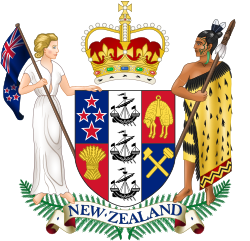| Treaty of Waitangi Act 1975 | |
|---|---|
 | |
| New Zealand Parliament | |
| |
| Royal assent | 10 October 1975 |
| Commenced | Immediate |
| Legislative history | |
| Introduced by | Matiu Rata |
| Passed | 1975 |
| Amended by | |
| 1985, 1988 (twice), 1993, 2006 | |
| Related legislation | |
| State-Owned Enterprises Act 1986 | |
| Status: Current legislation | |
The Treaty of Waitangi Act 1975 gave the Treaty of Waitangi recognition in New Zealand law for the first time and established the Waitangi Tribunal. The tribunal is empowered to investigate possible breaches of the principles of the Treaty of Waitangi by the New Zealand Government or any state-controlled body, occurring after 1975. [1] It was also empowered to recommend, but not enforce, remedies.
Contents
- Purpose
- Amendments
- 1985 jurisdiction extended to 1840
- 1988 tribunal membership and hearings
- 1988 covenants on claimed State owned enterprise land
- 1993 prohibition on recommendations over private land
- 2006 all historical claims to be lodged by September 2008
- Other amendments
- 2014 Waitangi Tribunal findings
- 2025 review
- Parliamentary debates
- References
- External links
The treaty had been a focus of Māori activism for several years, but many Māori were disappointed in the efficacy of the Waitangi Tribunal. Most of the significant breaches of the treaty, such as land confiscation in the New Zealand Wars, had occurred in the nineteenth century, and the tribunal was initially in 1975 powerless to investigate these. [2] The act was amended in 1985 to enable it to consider claims dating back to 1840.